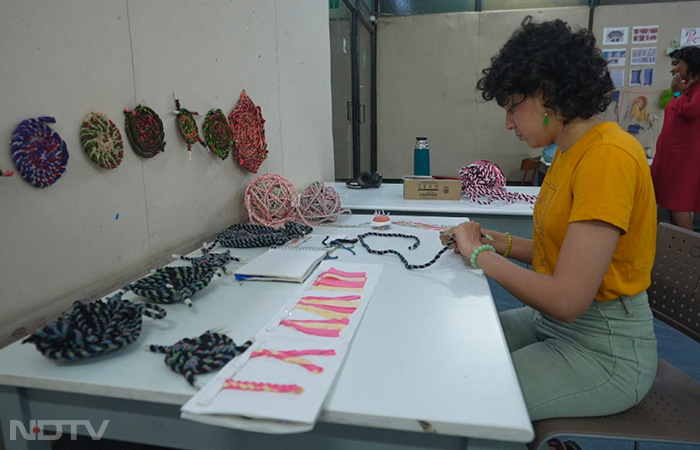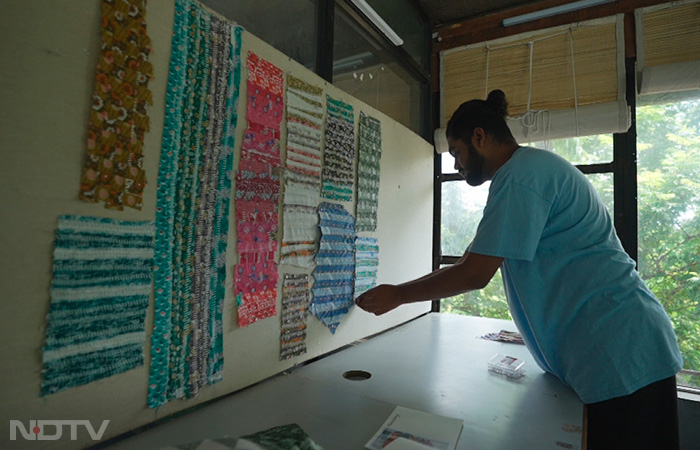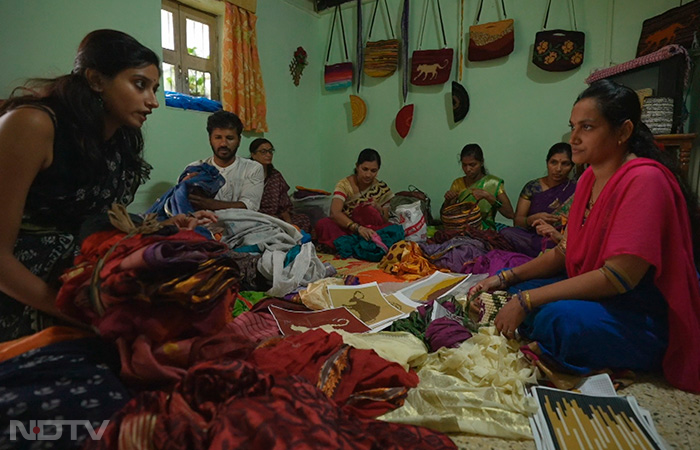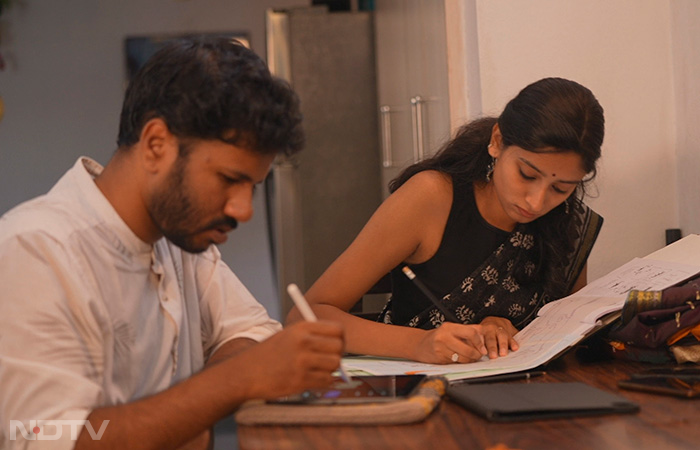Revolutionising The Concept Of Reusing Old Clothes
Students of the National Institute of Design (NID) in Ahmedabad are working on a design project wherein they are repurposing old clothes, giving a new life to second-hand clothes and textile waste.
-
For a design project, students of the National Institute of Design (NID) in Ahmedabad are repurposing old clothes. They purchased the raw materials from two prominent markets of Ahmedabad - Dilli Darwaza, a market for second-hand clothes and Daryapur, a place for textile waste. Following this, clothes are taken to the design lab to give them a new form, shape purpose and a new life.
-
There is a uniqueness to each of the design projects, in the way the students approach the material and the method. For example, Isha Bapat, one of the students is using a fabric rope made from scraps which is essentially factory waste. She opted for a technique called coiling or basketry to make forms and structures with it.
-
Another student, Hrishabh Sonu, has chosen patchwork as a method of reworking the patches. He tells that he selected the material from the industrial waste of bedsheets as they had floral prints in common which helped him in creating patches with a similar-looking pattern. He tries to stick to natural products mainly to avoid the use of synthetic material as it takes a long time to decompose and thereby pollutes the environment.
-
Kanupriya Lohia opted for a technique called smocking where the fabric is gathered up in a creative way while allowing the wearer to have the elasticity of movement without adding buttons. Kanupriya tried the technique on an Indian saree. Elated with the final result, she says, "It might be very good as a blind; something that could potentially replace regular curtains and add an element of Indianness to your household."
-
Each material, each type of cloth comes with its own unique properties. Understanding each one's limitation, yet working to its best potential is what makes the design project even more interesting. And, of course, the fact that the students are trying to achieve larger goals, beyond their coursework that is protecting the environment.
-
It's training and learning that is helping designers make a tangible difference in the professional world. Tejal Deshpande, an alumna of NID, is a designer who used her training to start a brand "Tejal Keyur Textiles", where she upcycles discarded sarees into design products, mainly fashion bags and clutches. Tejal tells that during her tenure at NID, she subconsciously used surplus materials in her design projects.
-
While Ahmedabad had Dilli Darwaja and Daryapur as ready markets of fabric waste and second-hand clothes, Tejal had to start building her contacts from scratch in her hometown of Kolhapur. She connected with the women from the Boharin community, who collect old sarees or clothing from door-to-door in exchange for utensils. She also built contacts with local shop owners around Mahalaxmi Temple, who collect sarees offered to the goddess Mahalakshmi.
-
Initially, Tejal would craft all the products on her own. But, gradually, as it became difficult for her, she trained a small group of women in Kolhapur and taught them how to knit - crochet knitting out of strips of the sarees. Tejal and Keyur, her husband, have currently employed seven women from the Ambewadi village. They take second-hand clothes to women in the village who upcycle them into bags, wallets, and baskets under the brand name Tejal Keyur Textiles.









